h e S y c a m o r e

T
NEWS FROM WILLISTOWN CONSERVATION TRUST | FALL 2022
Catherine W. Etherington
Executive Director
Julie S. Graham Associate Executive Director
BOARD OF TRUSTEES
Jeanne B. Van Alen
President Emerita
Elizabeth C. Hucker | Chair
Bryan D. Colket | Vice Chair
Alice E. Hausmann | Vice Chair
V. Richard Eales | Treasurer

Matthew E. Taylor | Assistant Treasurer
John F. Stoviak, Esq. | Secretary
Leanne M. McMenamin | Assistant Secretary
Timothy B. Barnard, Esq.
L. Clarke Blynn Michael Burg, Esq.
Anthony J. DiValerio, Jr.
Meg Tegler Hardesty
William T. Howard
George F. Krall, Jr.
Mark T. Ledger
Lindsay Scott Leisenring
Michael J. McGraw
Peter S. Strawbridge*
James L. Van Alen II
Tana M. Wall*
Richard A. Warden
Jason D. Weckstein, Ph.D.
Alejandro Zozaya
* Trustee Emerita/Emeritus
STAFF
Todd Alleger | New England Motus Project Technician
Mary Armstrong | Executive Assistant
Aaron Coolman | Motus Technician and Avian Migration Ecologist
Sue Costello | GIS Coordinator
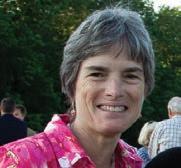
Mike Cranney | Preserve and Facilities Manager
Fred de Long | Director of Community Farm Program
Michelle Eshleman | Motus Avian Research Coordinator
Alison Fetterman | Bird Conservation Associate & PA Motus Project Manager
Blake Goll | Education Programs Manager
Eliza Gowen | Community Farm Outreach Coordinator
Noah Gress | Rushton Farm Field Manager
Chelsea Heck | Director of Annual Fund and Outreach
Erik Hetzel | Director of Land Protection and Public Grants
Sarah Hutchin | Garden and Landscape Coordinator
Andrew Kirkpatrick | Director of Stewardship
Lisa Kiziuk | Director of Bird Conservation Program
Kelsey Lingle | Director of Communications and Marketing
Lindsay Martin-Carlson | Event Support Manager
Lauren McGrath | Director of Watershed Protection Program
Monica McQuail | Communications Specialist
Molly Clark Tracy | Rushton Farm Production Manager
Elly VandeMerkt | Development Assistant
Anna Willig | Watershed Conservation Associate
Cover Photo | Jennifer Mathes
WILLISTOWN CONSERVATION TRUST 925 Providence Road | Newtown Square, PA 19073 610.353.2562 | wctrust.org
ANNOUNCEMENTS
Willistown Conservation Trust is a nonprofit, tax-exempt corporation under Section 501(c)3 of the I.R.S. Code. Donations are tax-deductible. A copy of the official registration and financial information may be obtained from the PA Department of State by calling toll free, within Pennsylvania, (800) 732-0999. Registration does not imply endorsement.
Message from the Board Chair
Dear WCT Family and Friends,
This will be my final contribution to the newsletter as Chair of the Board of Trustees, as I will be stepping down at the end of the year. John F. Stoviak was unanimously selected by the Board to succeed me, and together, we are working with Kate Etherington to ensure a seamless transition. I feel fortunate that I have two years left in my final term to continue to serve this amazing organization.
I have loved my time leading the Board and assisting senior staff over the last 15 years, helping WCT achieve the following major milestones: (1) establishing Rushton Woods Preserve as a field study site with the Academy of Natural Sciences/Drexel University; (2) establishing the Watershed Protection Program; (3) completing the construction of the Rushton Conservation Center and (4) overseeing a smooth transition at the Executive Director level of WCT. Underneath these larger initiatives are the multitudes of successes within each of our Programs. A big round of applause to every single one of WCT’s staff for the hard work and dedication they put into their jobs every single day.
By the end of the year, I hope two more milestones will be achieved: (1) completion of the Campaign for Rushton Woods and (2) the publication of WCT’s next Long Range Plan. Both are vital to WCT’s future. The financial sustainability of the organization will continue to need you, our loyal supporters, to help raise the bar in annual giving and perhaps think of other ways to provide longterm financial support to the organization, including Legacy Giving (see more on page 22) to bolster WCT’s capital base and programmatic funding needs. Please contact Kate Etherington (kwe@wctrust.org), Julie Graham (jsg@ wctrust.org) or Chelsea Heck (cmh@wctrust.org) if you have an interest in pursuing other ways to invest in WCT, in addition to contributing to the Annual Fund.
I look forward to seeing you all at upcoming WCT events, on the trails at one of our preserves, or visiting the farm!
MANY thanks for your support!
Beth Hucker, Board of Trustees Chair
2 | NEWS AND

TABLE OF CONTENTS | 3 THE SYCAMORE NEWSLETTER | FALL 2022 CONTENTS 2 | Message from the Board Chair 4 | Letter from the Executive Director 6 | Freshwater Mussels: The Hidden Gems of our Streams 8 | Travels of a Secretive Owl: 12 Years of Northern Saw-whet Banding Data at Rushton Woods Preserve 14 | Rushton Trails: A Look at What’s Going on at Rushton Woods Preserve 16 | Science Class at Rushton Farm 18 | Where in the World is WCT? 20 | Introducing WCT’s New Corporate Partnership Program 22 | Legacy Society - Will You? 23 | Staff and Trustee News JENNIFER MATHES
Letter from the Executive Director

It has been a wonderful spring and summer at WCT with so many moments to celebrate — a beautiful and successful Barns & BBQ fundraising event, the first breeding of purple martins and kestrels at our preserves, the publication of the State of Our Streams Report, welcoming school groups back to the farm, new habitat restoration and trail projects beginning at Rushton Woods, the expansion of Kirkwood Preserve, and so much more.
As we look ahead, WCT staff and Trustees continue to work on visions, goals, and strategies for the 2023-25 Long Range Plan. An integral part of this process will be deepening our Diversity, Equity, and Inclusion efforts. This fall we will begin a several months-long engagement with consultants from The Nonprofit Center at LaSalle University, who will work with staff and board to both educate and craft specific goals. If you are interested in providing feedback via an anonymous survey, please don’t hesitate to reach me directly.
Lastly, I would like to extend a huge thank you to Beth Hucker who is stepping down from her six-year tenure as Board Chair. Beth has been an incredible leader during a time of extraordinary organizational growth and unprecedented global challenges. Beth, we are all grateful for your generosity, time, and dedication to WCT! I am excited to welcome John Stoviak as the next Board Chair, who will play a key role in launching our next chapter.
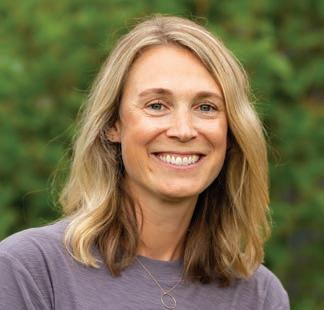
As always, thank you for being a part of WCT’s mission. I hope to see you at Run-A-Muck, Market in the Meadow, our upcoming Kirkwood Preserve Hike, or elsewhere in the coming months!
Gratefully,
Catherine Etherington Executive Director kwe@wctrust.org
4 | LETTER FROM THE EXECUTIVE DIRECTOR
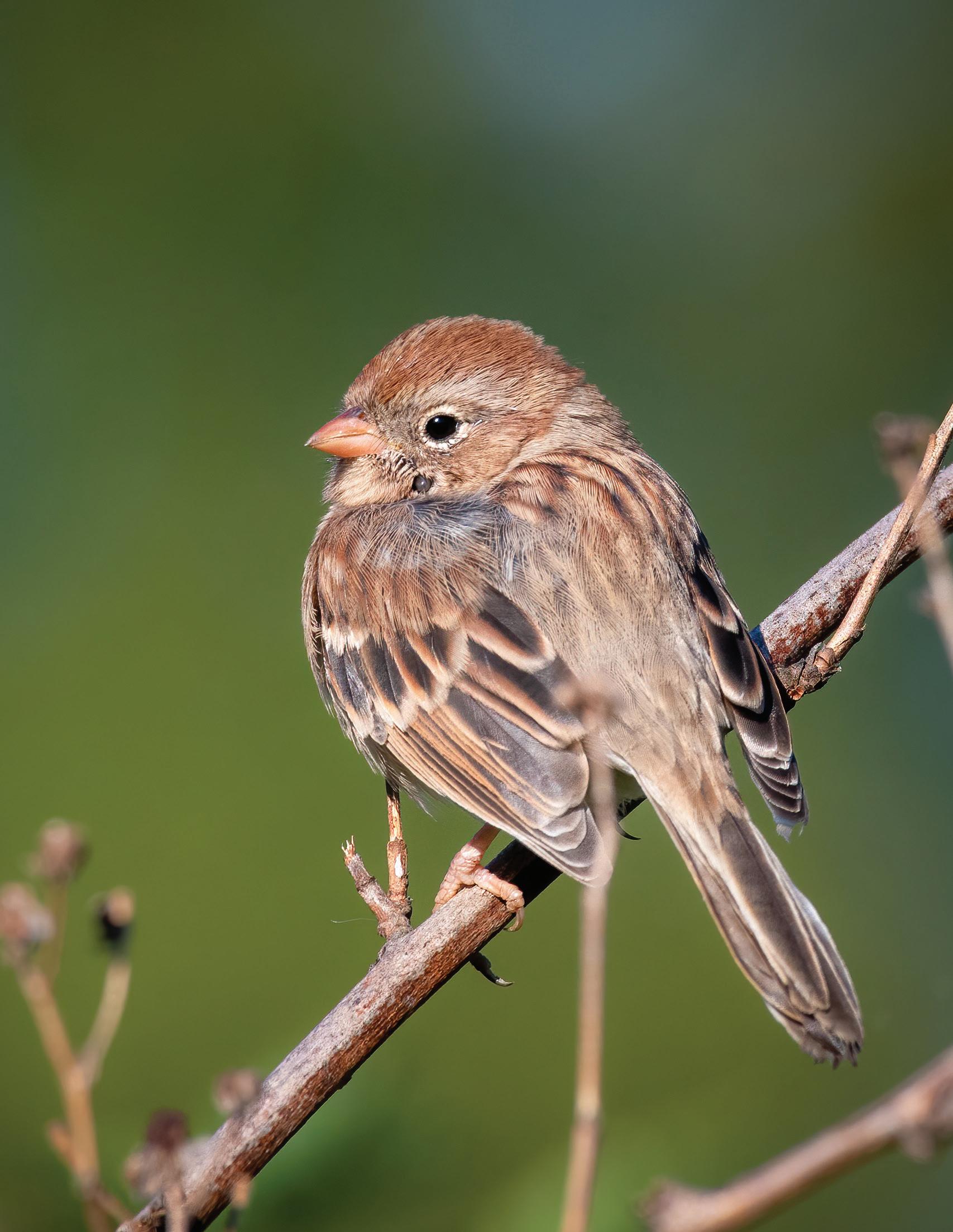
JENNIFER MATHES
Freshwater Mussels: The Hidden Gems of our Streams
By Catherine Quinn, Watershed Protection Program Co-Op
In early June 2022, the Watershed Protection Program had the opportunity to conduct two freshwater mussel surveys within the headwaters of Ridley and Crum Creeks with the help of the Partnership for the Delaware Estuary and the Academy of Natural Sciences of Drexel University.
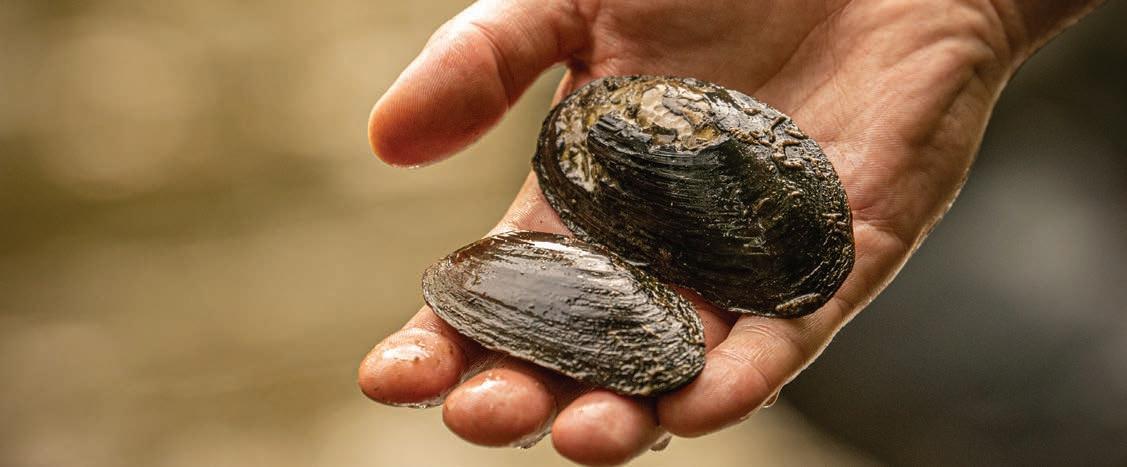
These surveys require a good-sized team with keen eyes and plenty of time to successfully locate mussels in the stream bed. Mussels can be tricky creatures to spot as they usually bury themselves into stream sediment and do not move. As we began each survey, the excitement became more resounding as we continued to discover more mussels around each river bend. The final counts for the two 500-meter stretches surveyed were 63 live mussels in Ridley Creek and 75 in Crum Creek. Both streams boasted a range of mussel sizes, suggesting that there has been successful reproduction in the last several years! Our surveys were qualitative, meaning their primary purpose was to determine if these two creeks currently or have previously maintained mussel populations.
All of the live mussels we found were identified to be Eastern elliptio (Elliptio complanata). Typically, low species diversity is not a great indicator of stream quality. However, it is an overwhelmingly positive sign when any population of a native freshwater mussel species is present. Freshwater mussels are currently the most endangered family of organisms in North America, with seven species having been declared extinct in the last year. You can take a deep breath if mussels are one of your favorite foods — saltwater mussels are the tasty variety we eat and are not considered to be threatened at this time. Freshwater mussels are not recommended for human consumption, but are a favorite food of many types of wildlife!
Freshwater mussels are integral to the health of stream ecosystems. When they are going about their lives in water, they are capable of filtering up to 15 gallons of water every day. This keeps our waterways cleaner by removing sediment and pollutants including microplastics. Freshwater ecosystems are able to thrive when mussels remove suspended sediment from the stream, because this allows sunlight to reach aquatic plants with more ease, and in turn, more dissolved oxygen is provided to other organisms. Without mussels, water quality can rapidly decline, and overall ecosystem health can collapse.
Two Eastern Elliptio mussels found in Ridley Creek. Photo by Jennifer Mathes.
6 | NEWS AND ANNOUNCEMENTS
Staff from the Watershed Protection Program, Academy of Natural Sciences of Drexel University and the Partnership for the Delaware Estuary in surveying for freshwater mussels in Ridley Creek. Photo by Jennifer Mathes.

The presence of freshwater mussels is only a snapshot in time of a stream’s health. With ongoing land use changes and increasing pollution, mussel populations can rapidly disappear from streams. We should celebrate the population found in our creeks by using them as motivation to continue to improve efforts to conserve our watersheds. In order to conserve these current populations and prevent them from disappearing, it is imperative to be mindful of our choices on land and how these choices affect our streams and water quality.
For instance, mussels are very sensitive to road salt entering the stream during snowmelt events, so sweeping up salt from roads and sidewalks can help reduce the impact of salt on these incredible creatures. If you are interested in learning more about water quality within our watershed and how to help support the health of headwater streams, check out the State of our Streams Report on our website to see what kind of conditions exist in these important streams!
As for areas at risk of mussel loss or absence, there are ongoing efforts in the restoration of threatened populations. Our friends at the Partnership for the Delaware Estuary and the Academy of Natural Sciences are working with Fairmount Water Works on the Mussel Hatchery to reestablish freshwater mussels. If you find a freshwater mussel in your local waterway, please contact Lauren McGrath, Director of Watershed Protection Program, at lbm@wctrust.org!
STATE OF OUR STREAMS REPORT
By Lauren McGrath and Anna Willig
Since 2018, the WCT Watershed Protection Program has monitored water quality at ten sample sites in the headwaters of Darby, Crum, and Ridley Creeks. Heartfelt thanks goes out to all of the incredible people who have contributed to this report. The expertise of researchers from the Academy of Natural Sciences of Drexel University and Stroud Water Research Center helped to create a water quality monitoring program and facilitated how WCT’s conservation efforts have impacted local stream health.
Every four weeks, the team visited each of the ten sites to take in-stream measurements and collect samples for analysis in the lab. We are proud to present our findings on water quality based on analysis of our data collected from 2018 through 2021, which includes 41 monitoring visits and over 7,500 different measurements.
To read the report in full, visit wctrust.org/watershed.

Travels of a Secretive Owl
12 Years of Northern Saw-whet Banding Data at Rushton Woods Preserve
By Kaitlin Muccio, Avian Field Technician Intern
As autumnal winds carry frosty temperatures to coniferous forests of the north, a young saw-whet owl departs southward. Carried by the wind, her journey is hidden under the cloak of night. She lands in a forest to rest and feast on woodland rodents. Suddenly, a high whistling too-too-too of a familiar friend calls out. She flies between the trees to find her caller, when flop! she gently falls into a cradle of netting.
In 2010 Rushton Woods Banding Station (RWBS) became one of over 120 banding stations to join Project Owlnet in a collaborative effort to better understand the movement ecology of northern saw-whet owls. Six nights a week from October to November, our banders use audio-recordings of male territorial songs to attract migrating saw-whets into mist nets so they can give each owl a uniquely numbered band, record age, sex, and other important morphological data. Little is known about the migratory and wintering behavior of this small, secretive owl that breeds in boreal and mountainous forests of North America. Looking at years of data collected by Rushton banders, we can begin to uncover the dynamic nature of saw-whet populations and their migratory movements.
SAW-WHET ECOLOGY | The northern saw-whet owl (Aedolius acadicus) is a small species of owl, measuring around 8 inches in length and weighing 2.5 ounces (77.8 grams, male) to 3.4 ounces (95.4 grams, non-breeding female) (Weidensaul, 2015). Found in the boreal forests of Canada to the mountain ranges of southwestern Mexico, saw-whets often breed in conifer woods, but can overwinter in a variety of habitats. Closer to us, saw-whets are known to breed along the Appalachian Mountain range, nesting in old woodpecker cavities. Common prey species include voles and white-footed mice. Saw-whet movements are complex, with the species being described as nomadic and exhibiting both resident and migratory behaviors that vary by sex and age. During fall migration, individuals from eastern populations will migrate as far south as Alabama and Georgia, before migrating back north in the spring to breeding grounds in New York and Canada.
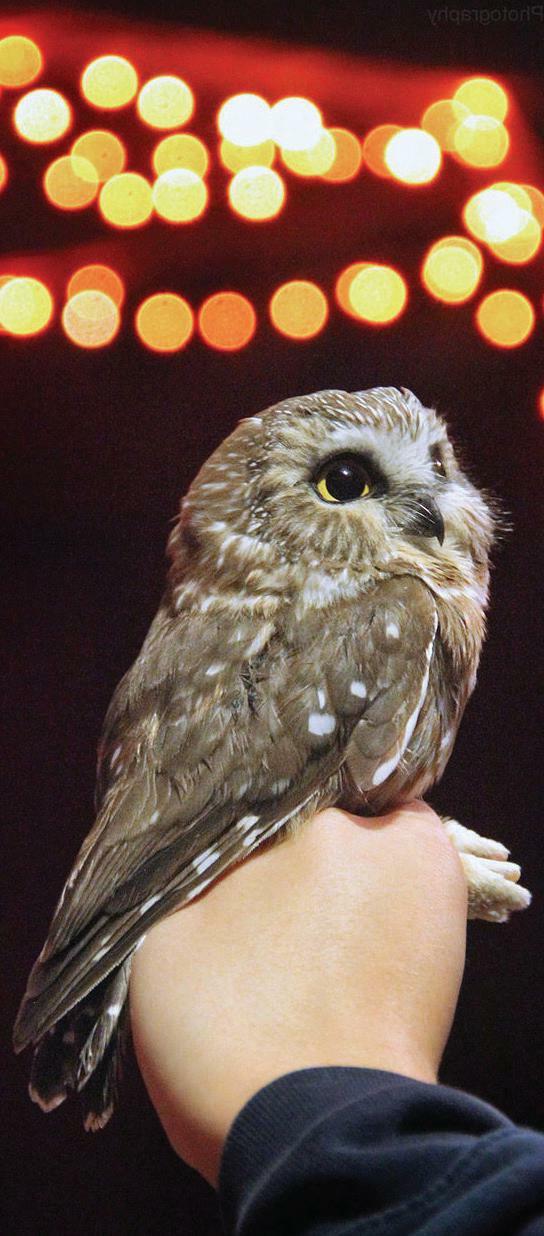
8 | NEWS AND ANNOUNCEMENTS
CELESTE SHEEHAN
RUSHTON SAW-WHET BANDING |
After 12 years of banding, 953 northern saw-whet owls have been banded at Rushton Banding Station during fall migration, in addition to 30 foreign recaptures (saw-whets banded at another station) being catalogued. The number of saw-whets migrating south every year is influenced by prey abundance on the breeding grounds. Years with a high rodent population increases the survival of saw-whet fledglings, meaning more juveniles migrate in the fall (Côté et al., 2007). Looking across time, we can see how migration numbers at Rushton increase and then decrease the following year, likely due to fledgling survival (Figure 1). In addition to year-to-year fluctuations, saw-whet populations exhibit cyclical peaks, or irruptions, where they migrate in unusually high numbers. Rushton experienced such irruption events in 2012 and 2018, when captures totals of new saw-whets were 263 and 154, respectively.
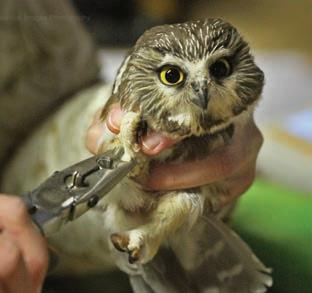
Figure 1. Total number of new, local recapture, and foreign recapture northern saw-whet owls during fall migration from 2010 through 2021. Note that years 2012 and 2018 experienced irruptive migration events, with unusually high numbers.
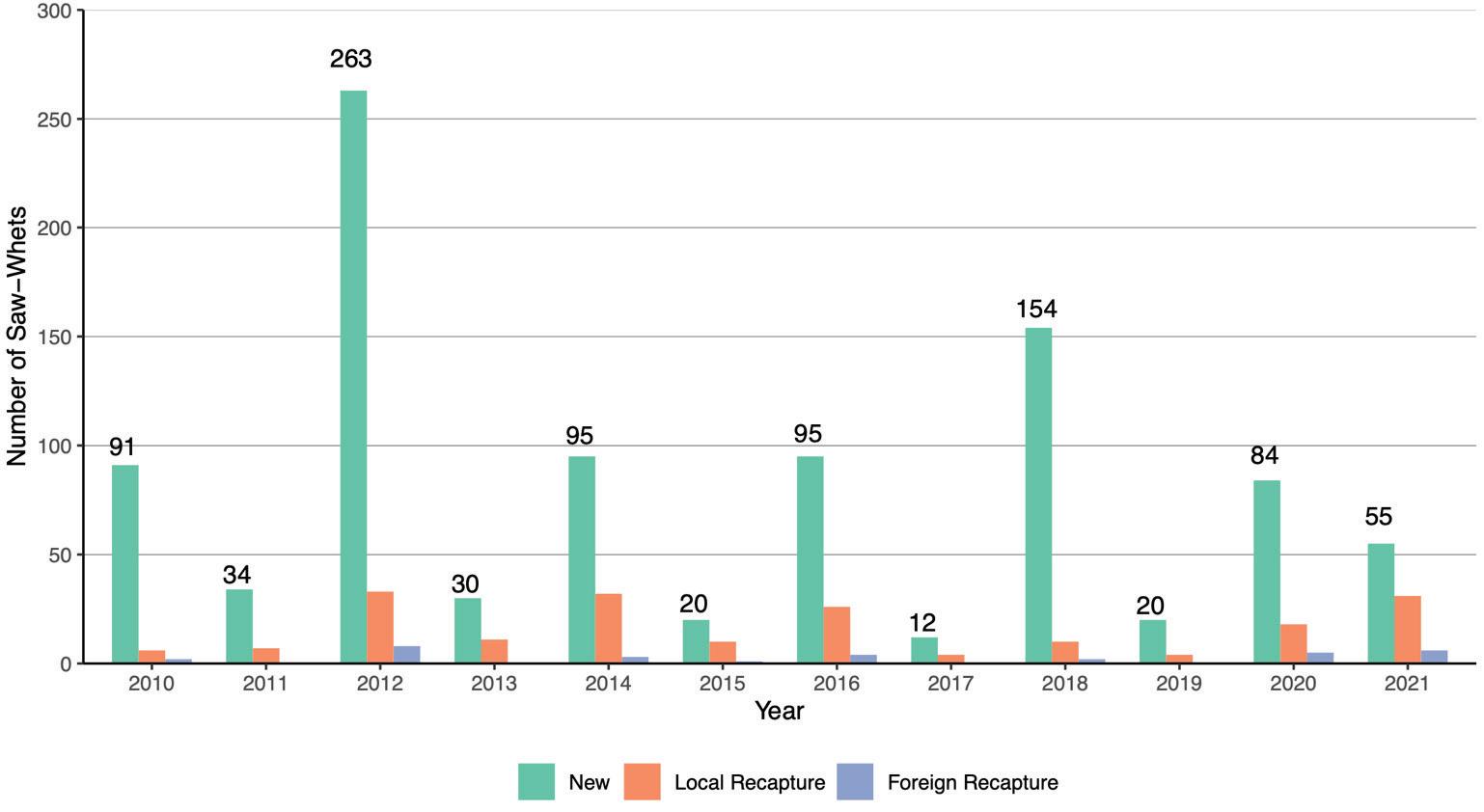
NIGHTLY CAPTURES AND WEATHER EFFECTS |
The number of saw-whets captured in a single night can vary due to environmental factors like wind, temperature, and moon phase. Figure 2 shows daily variation in saw-whet captures across all years, with migration generally peaking in late October to early/mid-November. Nights with high captures often have strong northerly winds that help push migrating saw-whets south, and have minimal moon illumination, making mist nets less visible and decreasing risk of predation by larger owl species (Frye, 2012).
Such northerly winds and hidden moons likely led to exceptionally high capture numbers on three special days at Rushton, highlighted in Figure 2. In 2016, a storm rolled in on the eve of Halloween, sending banders running for cover and closing nets early. To trick-or-treaters’ delight, the rain had stopped come morning, though northern wind gusts of up to 20 mph continued into the spooky night and brought in 27 saw-whets, the highest catch of the 2016 season.
On November 6, 2012, 37 saw-whets were captured, likely brought in by two nights of high winds from the north, and a waning crescent moon that helped to keep mist nets hidden. Nearly identical conditions were seen on Rushton’s record day on November 8, 2018, where winds shifting from southwest to northwest carried in 79 saw-whets.
NEWS AND ANNOUNCEMENTS | 9
Figure 2. Nightly captures of new northern saw-whet owls during yearly fall migrations from 2010 through 2021. Nights with high captures denoted by an asterisk.

AGE AND SEX | Banding data across the continent shows age and sex differences when it comes to saw-whet migration. Hatchyear (HY) and female saw-whets tend to migrate further south in the fall, while adults (AHY) and males travel shorter distances, sometimes remaining in boreal forests during the winter (Beckett and Proudfoot, 2012). This phenomenon is evident at Rushton, where almost three quarters of all saw-whets passing through are female and hatch-years. Interestingly, the ratio of HY to AHY can vary by year. During the irruption years of 2012 and 2018, nearly all individuals caught were HY, with only 16% of individuals aged as AHY. In non-irruptive years, the age difference was less stark with up to 40% of individuals being AHY (Figure 3). The difference in sex ratio indicates that irruptive years are related to high nest success in the boreal breeding grounds that leads to more hatch-years come migration.
Figure 3. Age ratios of saw-whets captured at Rushton Woods for irruptive and non-irruptive years. AHY includes all adults aged AHY (after-hatch year), SY (second year), ASY (after second year), TY (third year), ATY (after third year).
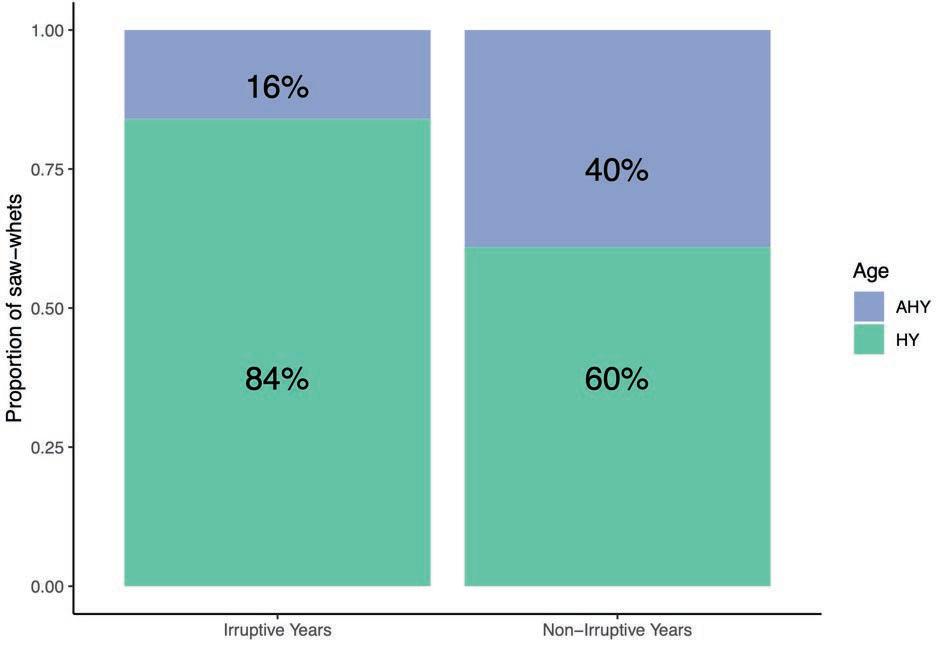
10 | NEWS AND ANNOUNCEMENTS
FOREIGN RECAPTURES | With researchers around the continent banding saw-whets using Project Owlnet protocols, we will sometimes capture individuals that were banded at other stations and record them as a foreign recapture. The map in Figure 4 shows the original banding sites, in blue, of saw-whets that were later captured at Rushton. We have caught 30 foreign recaptures from over 18 other banding stations. A quarter of all foreign recaptures were banded in Canada at well-known banding sites like Tadoussac Bird Observatory in Quebec and Long Point Bird Observatory in Ontario. Looking at the mosaic of banding sites that some saw-whets have visited, it is amazing to think of the journey on which these owls embark. For instance, in the irruptive migration of 2012 a hatch-year originally banded at Tadoussac flew over 600 miles down to Rushton Woods in 34 days, traveling about 18.6 miles per day.
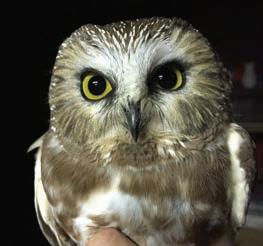
Figure 4. Map of 43 saw-whets banded at RWBS that were encountered other banding stations, and 30 saw-whets banded elsewhere that were recaptured at RWBS. All blue points indicate the original banding location, and all orange points indicate where a bird was recaptured. Each saw-whet (n=73) has one blue point and at least one orange point.
In addition to knowing where a saw-whet was banded, we have records of where saw-whets banded at Rushton have traveled to, indicated by orange points on the map. So far, 43 of our banded saw-whets were captured at more than 14 other banding stations or found elsewhere. Unfortunately, some of the orange points on the map are locations where a bird was found dead, often struck by a vehicle. Thanks to the band, we still acquire useful information on where the birds are traveling. Most of the saw-whets banded at Rushton are encountered at banding stations in Pennsylvania, New York, and Maryland. Some individuals have popped up years later at banding stations on the coast of Maine, back in Canada, and even in Ohio.

NEWS AND ANNOUNCEMENTS | 11
HOW LONG DO SAW-WHETS STAY NEAR RUSHTON WOODS? |
Given the possible nomadic nature and unpredictable migration of saw-whets, it is rare to recapture a banded individual years later. Excitingly, in the irruptive migration of 2012, we recaptured a third-year female saw-whet that we originally banded as a hatchyear in 2010! While recaptures like this are unusual, it is common to have local recaptures which are individuals that are caught multiple times within the same season. Local recaptures at Rushton were more common during non-irruptive years where 20% (n=107) of individuals were recaptured compared to irruptive years where only 8% (n=35) of individuals were recaptured. This suggests that probability of recapturing within the same season is density-dependent, meaning saw-whets are less likely to stay for long when migration numbers are high, likely due to resource competition (Whalen and Watts, 2002).
Figure 5. Stopover length in days of recaptured saw-whets near Rushton Woods Preserve.
Recording local recaptures is useful in measuring how long saw-whets stop over to rest and refuel before continuing their journey. Across all years, the average stopover duration of recaptured saw-whets was seven days, with some individuals staying for multiple weeks (Figure 5). In 2011 we recorded the longest stay of one saw-whet at 29 days, potentially indicating that this individual remained at or near Rushton Woods throughout the winter. It is unknown how far a saw-whet may hear the audio-lure we use; they may be flying over in migration, roosting right at Rushton, 1.5 miles away at Ridley Creek State Park, or in your own backyard! Regardless, this stopover data emphasizes the importance of preserving natural habitats for migratory species. Woodland sanctuaries like Rushton provide a haven for weary saw-whets and are especially important in a landscape increasingly dominated by urban sprawl.
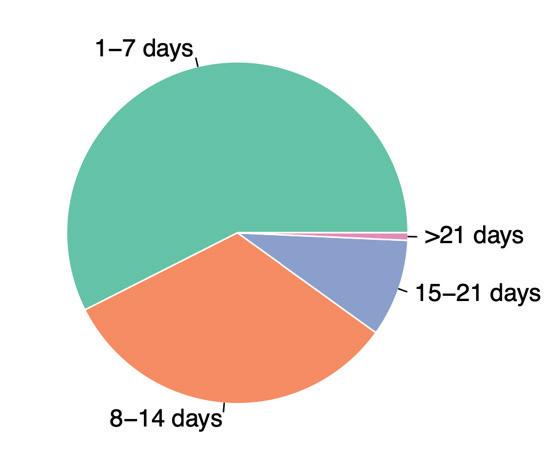
A WOODLAND SANCTUARY | While conservation efforts by Willistown Conservation Trust have created more open space that connects to Ridley Creek State Park, the surrounding landscape is highly developed, and habitat is largely fragmented. It is surprising that an interior forest breeding owl can be found within a suburban area, especially one so close to the city of Philadelphia. However, Rushton capture rates — the number of saw-whets caught per 100 net hours — are comparable to capture rates of three other partner stations in eastern Pennsylvania managed by Scott Weidensaul (Figure 6). These three partner sites, highlighted in the map in Figure 7, are characterized by large acres of woodland habitat, a stark contrast to the fragmented and developed landscape surrounding Rushton Woods. Despite this difference, our capture rates are not only similar but also show the same rising and falling population trends across the years.
Even though our area has fragmented habitat, saw-whets are still utilizing our woodlands and backyards as migratory stopover sites and perhaps even as overwintering grounds. The presence of these amazing owls reminds us that our actions can impact vital habitat. It is important that we work to protect our nocturnal neighbors by keeping dense vegetation in our backyards for saw-whets to roost, and by not putting out rodent poison to ensure saw-whets can feed safely during the winter. And just maybe, you too will hear the whistling too-too-too of a familiar friend calling out at night.
NORTHERN SAW-WHET OWL TWELVE YEAR BANDING REPORT
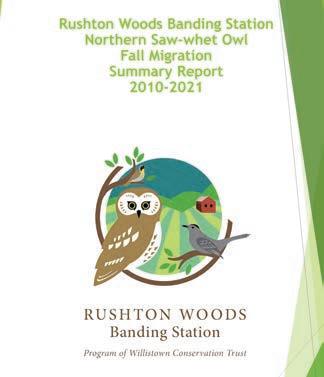
Willistown Conservation Trust joined Project Owlnet as a collaborator in 2010 to study the migratory patterns of the Northern Saw-whet Owl (Aegolius acadicus). Founded in 1994, Project Owlnet is a network of more than 120 independently run banding stations following a standardized protocol to track movement. The data we gather is used to help understand the wintering behavior of this small, secretive owl. We have published twelve years of our data collected at the Rushton Woods Banding Station to provide a glimpse into the dynamic nature of Saw-whet populations and their migration patterns.
To read the report in full, visit wctrust.org/research
Figure 6. Comparison of capture rates of northern saw-whet owls during fall migrations at Rushton Woods Banding Station and three other sites in eastern Pennsylvania from 2010 to 2021.

Figure 7.
Map of RWBS (star) and three partner banding stations in eastern Pennsylvania. Location of banding stations are magnified to compare varying degrees of human development surrounding saw-whet habitat.
REFERENCES
Beckett, S.R., Proudfoot, G.A., 2012. Sex-Specific Migration Trends of Northern Saw-Whet Owls in Eastern North America. rapt 46, 98–108. https:// doi.org/10.3356/JRR-11-10.1
Côté, M., Ibarzabal, J., St-Laurent, M.-H., Ferron, J., Gagnon, R., 2007. Age-Dependent Response of Migrant and Resident Aegolius Owl Species to Small Rodent Population Fluctuations in the Eastern Canadian Boreal Forest. rapt 41, 16–25. https://doi.org/10.3356/08921016(2007)41[16:AROMAR]2.0.CO;2
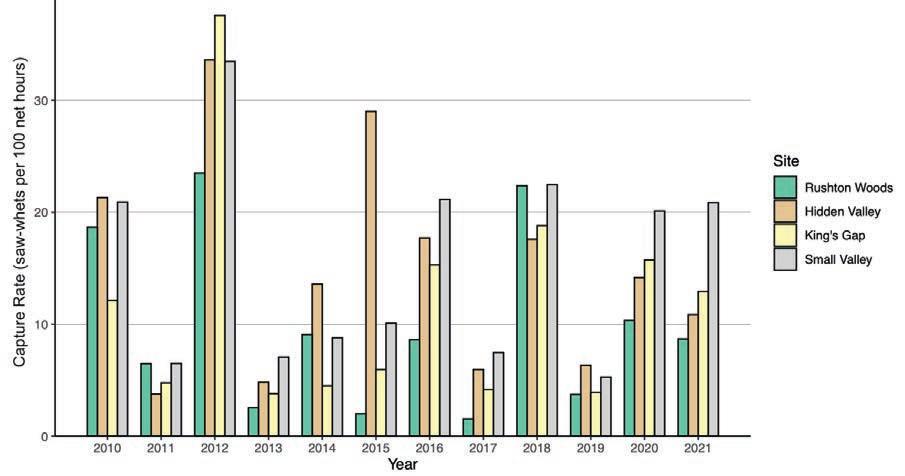
Frye, G.G., 2012. Autumn Migration Ecology of the Northern Saw-Whet Owl (Aegolius acadicus) in Northern Montana. rapt 46, 177–183. https:// doi.org/10.3356/JRR-11-25.1
Weidensaul, S., 2015. Northern Saw-whet Owl, in: Peterson Reference Guide to Owls of North America and the Caribbean. Mariner Books, pp.298–310. Whalen, D.M., Watts, B.D., 2002. Annual Migration Density and Stopover Patterns of Northern Saw-whet Owls. The Auk 119, 1154–1161.
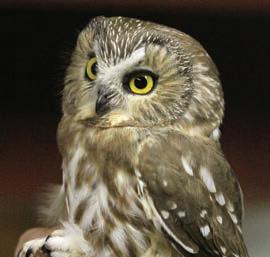
NEWS AND ANNOUNCEMENTS | 13
Volunteers help restore a section of trail. Photos by Andrew Kirkpatrick/Staff.
Rushton Trails: A Look at What’s Going on at Rushton Woods Preserve
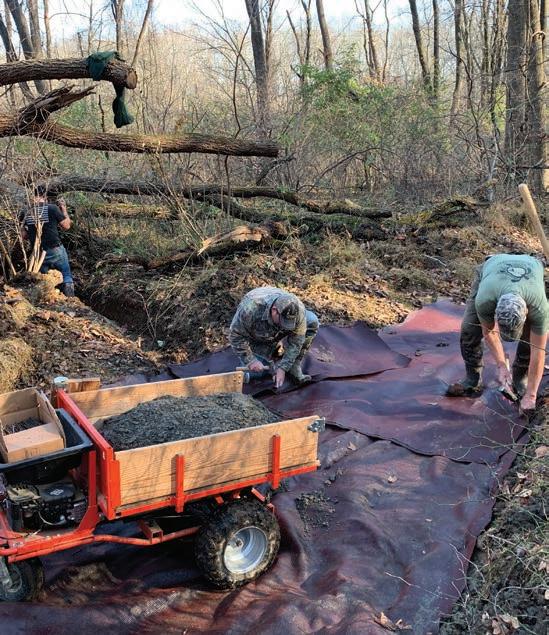 By Andrew Kirkpatrick, Director of Stewardship
By Andrew Kirkpatrick, Director of Stewardship
Now that fall is in the air, it’s a great time to visit our preserves and walk the trails. However, you may have noticed how muddy some of our trails can be, especially after heavy rains. As part of our master plan for Rushton Woods, we are taking the first steps to make our trails more enjoyable to walk and explore.
This fall, two exciting trail projects are beginning. The first project will be the regrading and resurfacing of the main equestrian trail through Rushton Woods Preserve. With a generous grant from Chester County, we are working with Green Roots, Inc. to create raised turnpikes through wet spots of the trail and replace the surface with stone to improve safety for equestrians and pedestrians alike. Turnpikes are a great trail construction method where the surface of the trail is raised approximately to the existing ground level to decrease erosion and wet boggy spots. The new surface will be more durable and provide a better experience for visitors. You may have noticed some spots along the trails where we experimented with some techniques before implementing them on a broader scale. The project is slated to begin mid-October, so please pardon the disruption during this time.
The second project, which we hope will begin late fall or early winter, will be the creation of an ADA accessible universal access path connecting the Rushton Conservation Center to the Farm along the hedgerow next to Delchester Road.
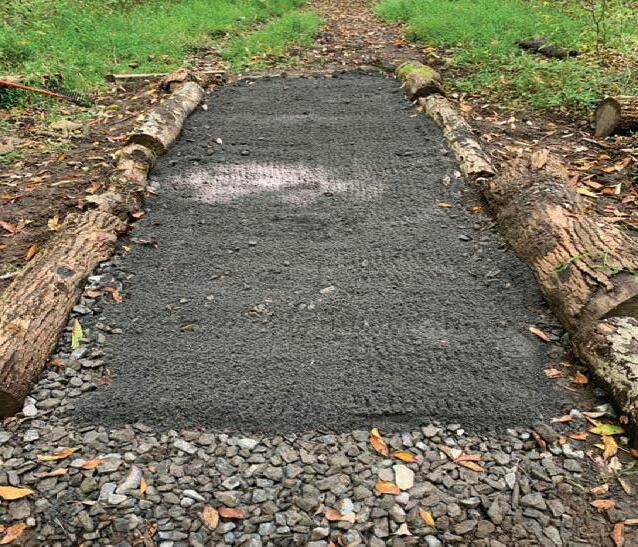 Examples of turnpike construction with stone and packed gravel layers. Photos by Andrew Kirkpatrick/Staff.
Examples of turnpike construction with stone and packed gravel layers. Photos by Andrew Kirkpatrick/Staff.
14 | NEWS AND ANNOUNCEMENTS
The path will be constructed using a stone aggregate that supports wheelchairs and strollers. As part of this project — generously funded by grants from Pennsylvania Department of Conservation and Natural Resources (DCNR) and Chester County — the hedgerow will be restored with native shrubs to support local bird populations and provide examples for visitors of great species to use in their own yards.

We recently received notice that we have been awarded another PA DCNR grant, which will be used to create a bioretention basin behind the Rushton Conservation Center that will help mitigate stormwater runoff on the preserve and reduce sedimentation into Okehocking Run. This project will also be an opportunity to improve habitat at the Preserve and serve as an example of green infrastructure to the public. Be sure to check out our social media for project updates!
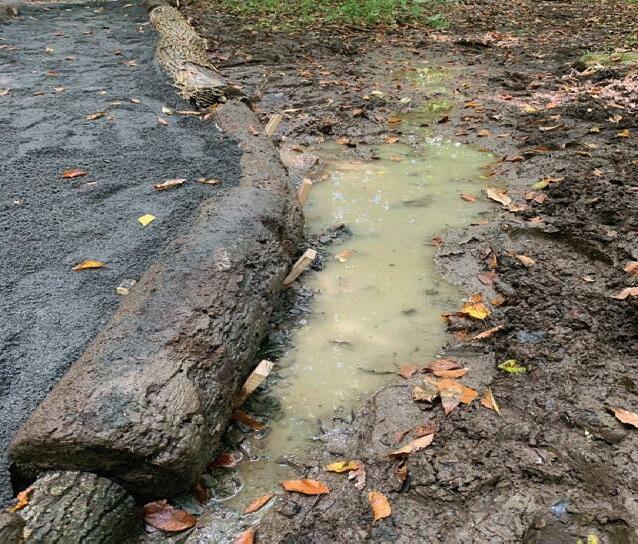
NEW HEDGEROW COMING TO RUSHTON WOODS THANKS TO BRANDYWINE BREEDING BIRD BLITZERS!
By Alison Fetterman, Bird Conservation Associate & PA Motus Project Manager
The PA Breeding Bird Blitz is an annual fundraiser hosted by the Pennsylvania Society for Ornithology (PSO) to support the protection of habitat for birds whose populations are declining in Pennsylvania. This year, funds went to support three projects, one being the Rushton Woods Preserve native hedgerow restoration project.
On June 20, from dawn until after dusk, the Brandywine Breeding Bird Blitzers, led by Brian Byrnes (WCT Bird Conservation and Education Committee member), Alison Fetterman (WCT Bird Conservation Associate), Jessica Shahan (WCT Bird Banding Volunteer), Barry Blust and Joel Flachs, spent 17 consecutive hours counting every bird seen and heard all over Chester County! Highlights included a predictable visiting Dickcissel, a rare Bufflehead at a Walmart retention pond, and a lone singing Kentucky Warbler at Ashbridge Preserve. We ended the night with 101 species! Number 100 was a very unexpected American Woodcock who came rocketing out of the darkness just over our heads and then plonked down on the trail nearby. Number 101 was an Eastern Whippoorwill who finally started calling at precisely 9:28 pm, just minutes before our designated end time of 9:30. Thanks to many supporters, our team raised nearly $4,000 (the most of any team) for Rushton’s hedgerow, which will provide habitat for the birds.
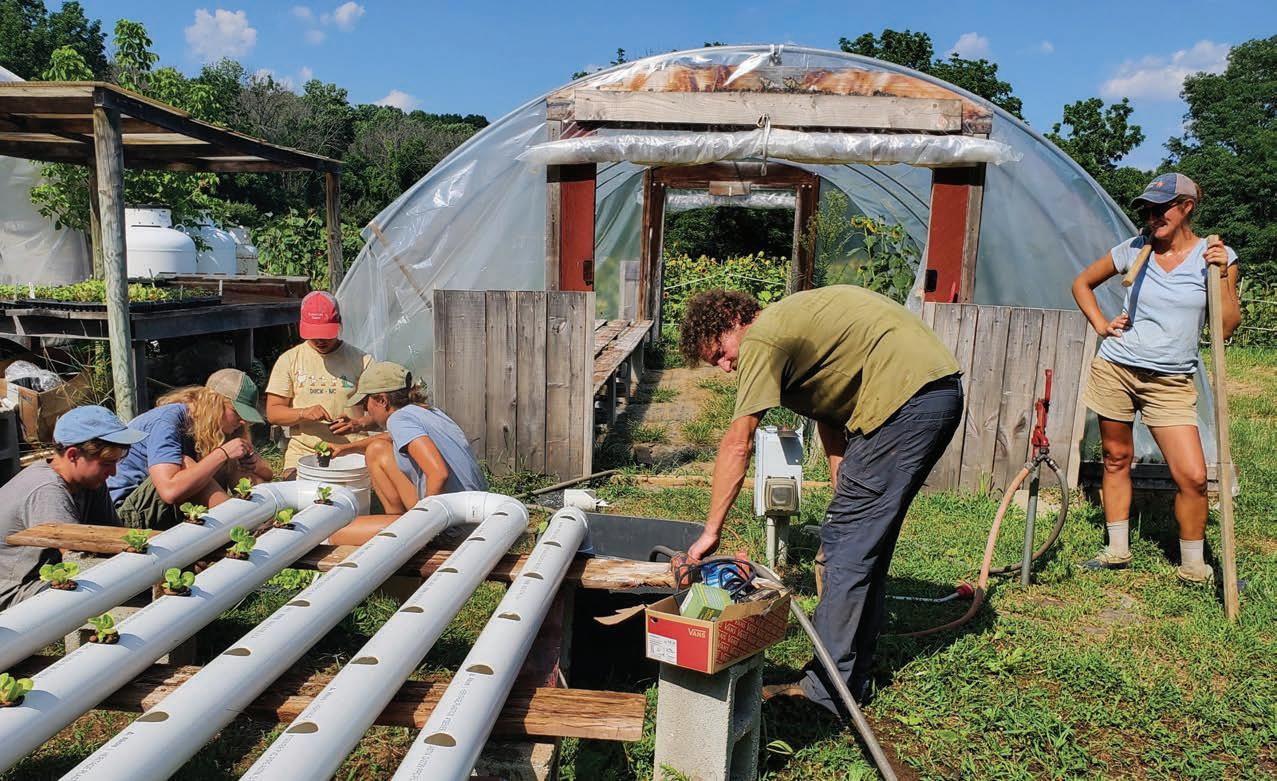
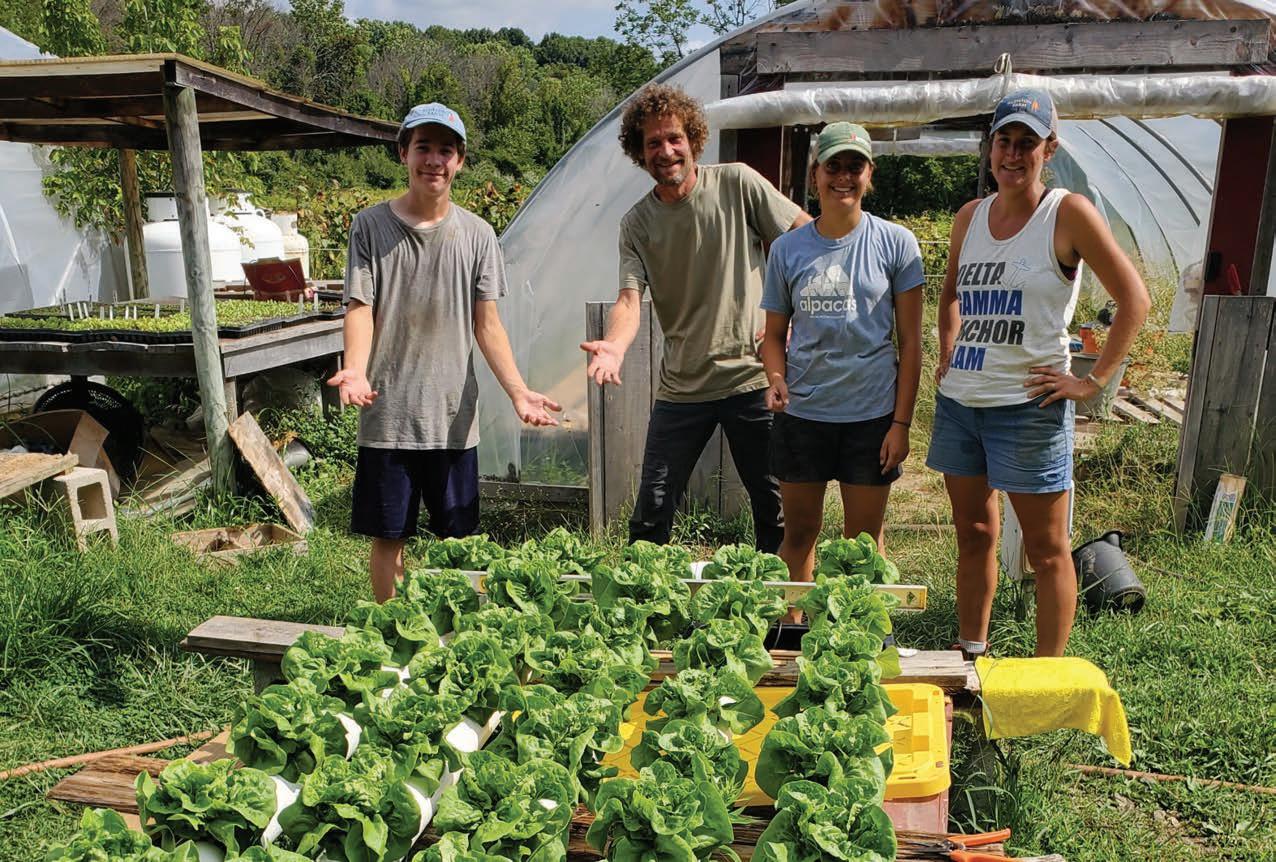 Barlow, Noah, Abby and Molly showing off the lettuce! Photo Fred de Long/Staff.
Noah and Interns Barlow, Freya, Noa and Abby setting up the hydro unit. Photo Fred de Long/Staff.
Barlow, Noah, Abby and Molly showing off the lettuce! Photo Fred de Long/Staff.
Noah and Interns Barlow, Freya, Noa and Abby setting up the hydro unit. Photo Fred de Long/Staff.
Science Class at Rushton Farm
By Fred de Long, Director of Community Farm Program
Education in the field has always been part of the mission of Willistown Conservation Trust (WCT). Whether it is agriculture, birds, watershed, stewardship, or land conservation, getting students out of the classroom and onto the land has been a key component of WCT programming. In developing Rushton Farm, WCT wanted to take the opportunity to teach interns not just about growing food but also about how agriculture affects the natural land around the farm. This concept is termed agroecology and it focuses on studying how agriculture can work in concert with the surrounding ecosystem.
The Rushton Farm intern staff has been an exceptional one this season with UC Davis students Abby Oswald and Freya Williams and Cornell students Noa Dijstelbloem and Kat Harrar working hard in the field. High school intern Barlow Herbst has been participating in the bird program as well as interning at the farm. While these students are getting work experience, they are also learning a lot about agroecology, soil science, and crop production. Every season we try to engage the students in activities beyond the standard fieldwork. Such activities include a study of pollinators, working with bees, or learning to work some of the larger equipment. This year, Rushton Farm Manager Noah Gress decided to challenge the interns with a special project.
With the world currently being in a global drought, Noah thought it would be a good idea to focus on water conservation techniques in agriculture. Rushton has always worked to conserve water through drip irrigation, mulch, limited water usage, and rotating our irrigation in the fields. But for the summer project, Noah had bigger plans.
The interns had shown an interest in hydroponics based on their studies at school. That is all Noah had to hear to set upon designs to build Rushton’s first hydroponic growing system.
Hydroponic gardening is a method of growing plants without any soil. With this system, the water does all the work of delivering the necessary nutrients to the plant roots. All that’s required is water, sunlight, carbon dioxide, and nutrients. Its many benefits include the ability to produce plants all year round, a small amount of space, and fast-growing plants.
The hydroponic unit at Rushton Farm is constructed from food grade pipes and a pump system to feed water through the piping. Holes are drilled through the pipes and lettuce seedlings are placed in the holes with their roots in the circulating water. This system allows the perfect oxygen to water ratio allowing the plants to grow without soil while limiting water usage.
The construction was a huge success and our first lettuce plants were harvested in September. Everyone contributed and enjoyed the learning process. The lettuce was donated to the West Chester Food Cupboard as part of Rushton Farm’s Share the Bounty Program, continuing our goal of growing food for our community while limiting the resources needed to grow it.
NEWS AND ANNOUNCEMENTS | 17
WHERE IN THE WORLD IS WCT
As the world has reopened, we have found ourselves exploring all sorts of new places! Read below to find out where in the world Willistown Conservation Trust (WCT) has been over the last six months.
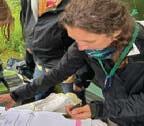

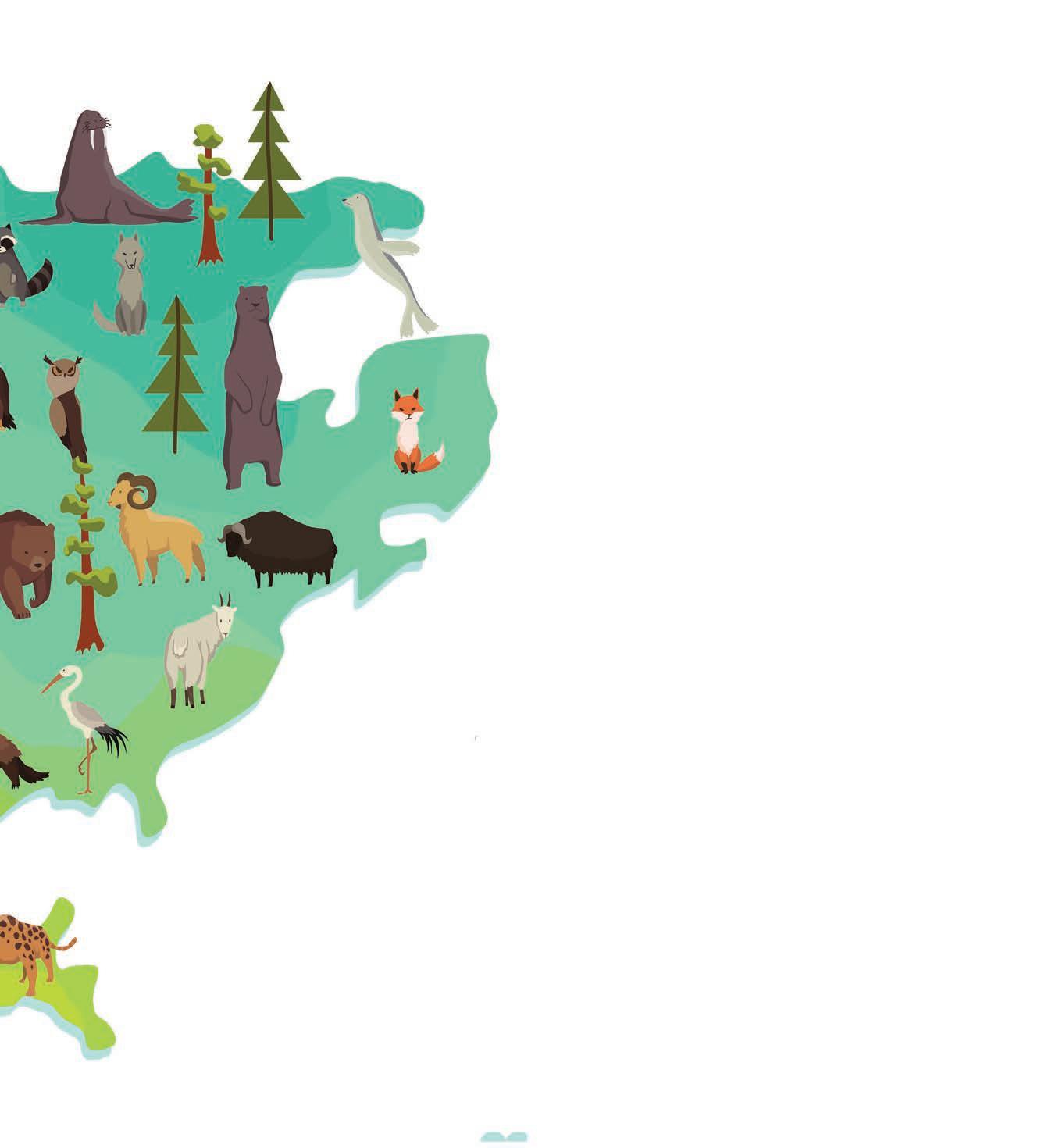
SAN JUAN, PUERTO RICO
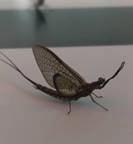
MARCH 22 – 29
In a new collaboration with Birds Caribbean, some of the WCT crew, plus partners from North Carolina Fish and Game, Carnegie Museum of Natural History, and Birds Caribbean traveled to Puerto Rico to provide hands-on training to local biologists while installing and repairing several Motus Automated Receiving Stations.

Aaron: We started our efforts in the southwest region of the island and installed the first station at Cabo Rojo National Wildlife Refuge with assistance from a handful of locals. We then traveled to the north side of the island on a coastal property managed by local land trust, Para la Naturaleza. With the beautiful karst mountain ranges to the south of us, we installed a second Motus station at Hacienda la Esperanza. The site is the focus of a sugar cane plantation restoration with hundreds of acres of low wetlands and streams. Hacienda provides views of tall palm trees, diverse grasses and shrubs, and selected varieties of native fruit trees. The effect produces a habitat reminiscent of what the island may have looked like before the plantations were established: a dense canopy of lush greens, flowers, textures, and tree bark unfamiliar to us in the temperate zones. We can’t wait to learn about the detections these stations will pick up in the future!
SAN JUAN, PUERTO RICO | JUNE 26 – JULY 1
WCT Staff Lisa Kiziuk, Alison Fetterman, Todd Alleger, Michelle Eshleman, Aaron Coolman; Interns Phillys Gichuru and Kaitlin Muccio; Volunteer Johannes Nelson teamed up with Birds Caribbean for a dual conference at The American Ornithological Society (AOS) held in San Juan, Puerto Rico, where WCT’s Bird Conservation Team joined 800 students and professionals from around the western hemisphere for this annual event.

Highlights included putting on a two-part training workshop that focused on building regional Motus arrays and the technical building aspects of a Motus station; contributing to a round-table discussion introducing the new long-term Motus Wildlife Tracking Program’s Strategic Plan; and brainstorming the future development of Motus stations throughout the southeastern U.S., the Caribbean, and Central and South America. Aaron: We made a lot of new friends and finally met many faces in person. And of course, we made time to escape the conference for a day to enjoy the local and endemic birds of the island, including a birder ’s delight: the Puerto Rican Tody.

NEW ENGLAND | THROUGHOUT THE YEAR
WCT’s resident New Englander staff member, Todd Alleger, has spent the last two years coordinating, managing, and installing a network of Motus receivers in Connecticut, Rhode Island, Vermont, New Hampshire, and upstate Maine. By the end of fall this year there will be 140 receivers installed and operated by the Northeast Motus Collaboration in New England — an incredible team effort!
In addition to the Carnegie crew, both Zoe Korpi and Aaron Coolman joined Todd on many Motus weeks of installation throughout the multi-year project. One of Aaron’s highlights includes an install on Metinic Island off of mid-coastal Maine, managed by U.S. Fish and Wildlife Service’s National Wildlife Refuge system. The island hosts a colony of breeding Common and Arctic Terns, as well as Leach’s Storm-Petrel, a robin-sized bird that roams the oceanic continental shelves in search of marine foods.
MONTREAL, QUEBEC | AUGUST 14 – 19
Lauren McGrath and Anna Willig traveled to the Ecological Society of America Annual Meeting in Montreal, Quebec. Lauren presented on the Darby Creek Community Science Monitoring Program, and Anna presented a poster showcasing the high frequency headwater stream monitoring data.
Lauren: The diversity of ecological research topics was incredible — everything was covered from genome sequencing and soil microbe interactions to alpine tree species and migratory fish patterns! At the conference there was strong emphasis on amplifying the voices of marginalized groups, particularly the Indigenous communities of Canada and the United States. We had the opportunity to network with representatives from the EPA and USGS, who were very interested to see what we had been learning about the impact of road salts on the Ridley, Crum and Darby Creek systems in our region.
Anna: Many of the researchers at the conference were from colleges, universities, and other research centers, so it was exciting to be representatives of the great research that happens at nonprofits!
STUEBEN, MAINE | AUGUST 20 – 27
Bird Conservation Associate Alison Fetterman was invited to co-lead a week-long seminar in avian field methods at Eagle Hill Institute on the scenic coast of Downeast Maine. Through a mix of classroom lectures, specimen study, and field mist-netting, Alison led a group of students and professionals new to bird banding in the operation of mist nets, safe handling and extraction techniques for songbirds, in-hand aging and sexing techniques, data collection procedures, mist net repair and how to work around unsuitable weather.
Alison: At the end of the week-long seminar, we had banded and discussed molt and procedures for 65 birds of 18 species. Highlights included many young warblers, a Cedar Waxwing, two Red-breasted Nuthatches, and an adult female American Redstart that had been originally banded during this seminar in 2015! We will be on the lookout for these birds as they migrate south, hoping they make a stopover at Rushton Woods.
NEW ORLEANS, LOUISIANA | SEPTEMBER 14 – 17
This year’s Land Trust Alliance annual conference — known as Rally — was in New Orleans, and Lauren McGrath teamed up with Margaret Rohde from Wissahickon Valley Watershed Association and Rick Tralies from Natural Lands to present a Land Trust’s perspective on protecting watersheds in a changing climate.
Lauren: One of the highlights on this trip was seeing all the mayflies! There was a massive mayfly (Hexagenia sp.) emergence out of the mighty Mississippi. Millions of insects congregated around the lights of the city, disgusting tourists from around the world. They are pretty common in the Mississippi River but conditions must be just right for a mass emergence to occur. In the spirit of New Orleans, under every streetlight gathered thousands of insects. It was a Mayfly Mardi Gras, with every balcony covered in the swarm, and instead of jazz music, we heard the quiet cluttering of clumsy wings. As much as I tried to educate passersby on the incredible nature of this natural phenomenon, I did not get any converts to the church of Ephemeroptera.




PHOTOS BY JENNIFER MATHES AND LINDSAY MARTIN-CARLSON 20 | NEWS AND ANNOUNCEMENTS
Introducing WCT’s New Corporate Partnership Program
An opportunity for local businesses and their staff to connect to nature and make an impact
By Monica McQuail, Communicatoins Specialist
You shop local. You eat local. You spend local. Well, now it’s time to enjoy local.
If the pandemic has taught us anything, it’s the value of being outside, the importance of maintaining relationships, and the benefit of preserving a healthy work-life balance. As employees return to the office, it is our hope here at WCT that we can continue to bring all of these things to those of you working at the local businesses in our area. We want to support the local businesses who support where we live, work, and play. To that end, we are pleased to launch our brand new Corporate Partnership Program.
This year-long Program is designed to enrich employee’s lives, contribute to local science and research, and make a far-reaching environmental impact. It allows you, your co-workers, and your employees to benefit directly from nature. And nature’s benefits are numerous; reduced blood pressure, heart rate, muscle tension, and stress hormones make for a happier, healthier community.
And best of all, this Program is meant to be enjoyed together. We want to give you the opportunity to get away from the office and build and deepen your connections with your colleagues, your staff, the outdoors, and us. As we know, the best way to connect is to disconnect.
Broken into three levels that fit a variety of budgets, the Corporate Partnership Program offers private group volunteer activities — think tree plantings, stream restoration, and trail clearing — that provide staff with the rewarding chance to build confidence, learn new skills, and make a difference in their community. Other benefits include guided educational and interactive experiences — including bird banding, creek walks, and preserve walks — offered throughout the year by WCT experts.
Corporate Partnership Levels include Preserve Partner ($25,000), Program Partner ($10,000), and Community Partner ($5,000), and all levels receive digital and physical advertising and recognition, as well as the potential for tax deductions. Preserve Partners will receive the added benefit of invitations to exclusive Trust events, a featured article in this very publication — “The Sycamore” — and their company name presented at our Preserve kiosks.
Additionally, this Program offers businesses the chance to invest sustainably, in an ethical way that would align with their ESG (Environmental, Social and Governance) values and support them in acting responsibly for the sake of our planet.
In turn, the support of a Corporate Partner will directly contribute to local conservation efforts and leading scientific research within WCT’s Program Areas — Bird Conservation, Community Farming, Land Protection, Stewardship, and Watershed Protection — and beyond. Through this Program, your business helps our organization monitor microplastics in our watersheds, better understand the effects of climate change by studying migratory birds, and double our land conservation efforts to prevent the unraveling of our ecosystems.
Interested in participating in Willistown Conservation Trust’s Corporate Partnership Program?
We invite you to scan the QR code to view all available benefits and apply today. Join us to make a difference together, support conservation, and enjoy local.

WILL YOU? Plan a Gift that Costs Nothing During your Lifetime!
By Julie S. Graham, Associate Executive Director
Remembering a charitable organization in your estate planning can be a wonderful way to leave a meaningful mark, express your personal legacy, and memorialize the values you espouse during your lifetime. A legacy gift to Willistown Conservation Trust can outwardly demonstrate your personal commitment to open space, land conservation, and environmental habitat preservation right here in this remarkable piece of Chester County.
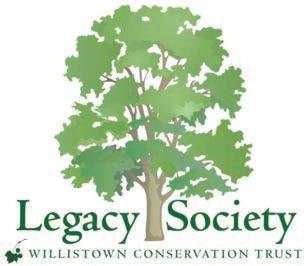
WCT Trustee Dick Eales and community volunteer Nancy Eales are two local residents who value open space and have made the personal decision to include WCT in their estate plans. They are strong believers in taking personal and local action to preserve the natural world. They care about natural resources and local wildlife and want to help sustain the work of WCT well after their active service to the organization is complete. “Our natural world is in danger and really needs our help, ranging from global initiatives to local habitat protection and improvement. Every bit of open and natural area, wildflower meadow, shrub/scrub thicket, and clean stream is precious,” says Dick. The Eales recognize that land trusts and open space advocates are vital components of regional, national, and global land conservation.
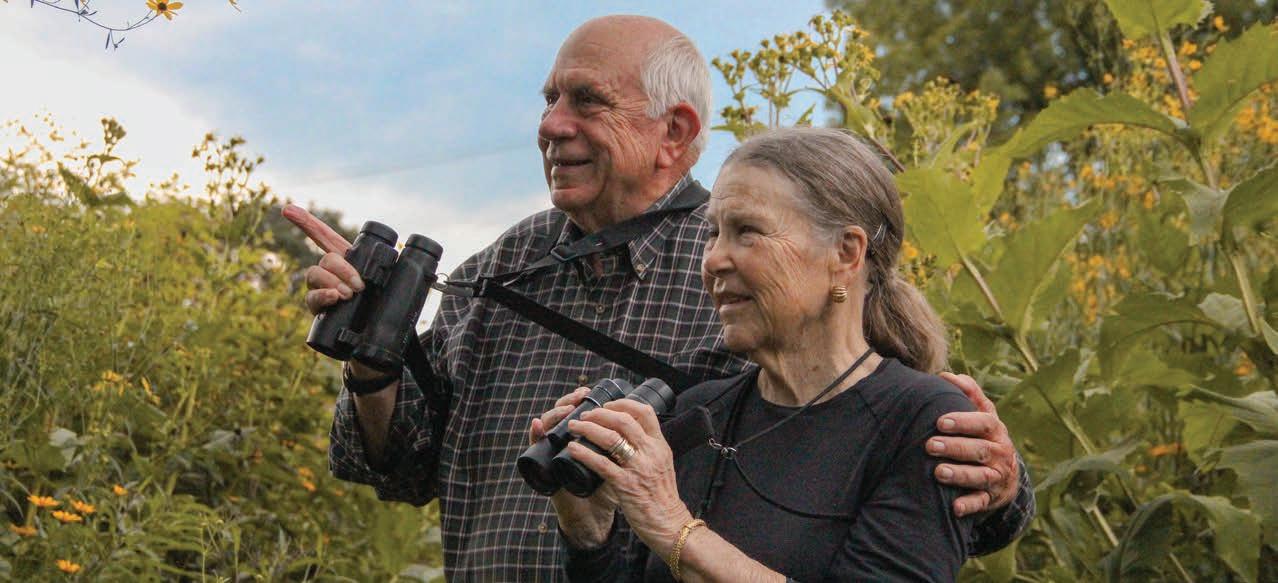
Today’s volatile economic environment presents financial challenges to all and makes tax planning and estate considerations worthy of forethought for everyone, regardless of the size of your estate. Planned gifts to WCT can be simple or complex and both will be profoundly impactful. The simplest, which costs nothing during your lifetime, is to name Willistown Conservation Trust as a beneficiary in your will, IRA-qualified retirement plan, or life insurance policy. This option will create a lasting impact on your community and the future of protecting local habitats.
Other options may offer strategic tax and income advantages. Charitable Lead Trusts and Gift Annuities to WCT can also be used to promote your personal philanthropic goals within your overall strategy for future generations. Your gift can be unrestricted or directed toward a particular program or purpose. If you have already made a plan to support WCT, let us know so we can celebrate your generosity.
Contact Kate Etherington (kwe@wctrust.org) if you would like to announce your intention or receive additional information. Will you make your mark on our community today? Will you leave a legacy?
22 | NEWS AND ANNOUNCEMENTS
JOHN STOVIAK | BOARD CHAIR ELECT
We are pleased to announce that John Stoviak, Esquire, has been named the incoming Chair of the Willistown Conservation Trust Board of Trustees, effective in 2023. Many of you already know John as he has served on the WCT Board of Trustees, most recently as Secretary, since 2014. We are thrilled that this dedicated champion of the organization will take on this new role going forward.
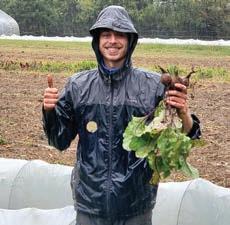
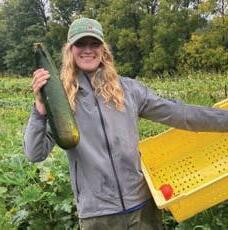

Professionally, John is a partner at the law firm of Saul Ewing where he currently chairs the Appellate Practice Group and the Environmental Civil Litigation Practice Group. He previously served two full terms as the Firm’s Managing Partner and a term as the Firm’s Chair of the Litigation Department. John’s law practice focus areas are high stakes business litigation, environmental litigation, trade secrets litigation, and board governance matters. John attended The Haverford School, Harvard College, and Dickinson School of Law.
John also finds time to devote to the causes that he supports. In addition to Willistown Conservation Trust, John has served on the boards of The Haverford School, the Philadelphia Union Foundation, Bryn Mawr Rehabilitation Hospital, Infocore, Inc., and Starfinder Foundation.

John lives in West Chester and enjoys spending his free time with his wife, Holly Heald Stoviak, and his two grown children, Morgan Elizabeth Stoviak and Tyler Stoviak.

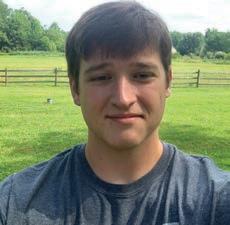









STAFF & TRUSTEE NEWS
A SPECIAL THANK YOU TO OUR 2022 INTERNS!
SARAH BUSBY Watershed Protection Program Co-Op
BARLOW HERBST
Rushton Farm Intern
CATHERINE QUINN
Watershed Protection
Program
Co-Op
KAITLIN MUCCIO Avian Field Technician KAT HARRAR Rushton Farm Intern
ABBY OSWALD
Rushton Farm Intern
NIYA JUANITA MOSS
Communications
& Outreach
Intern
NOA DJISTELBLOEM Rushton Farm Intern
PHILLYS GICHURU Bird Conservation Program Intern
VINCENT
LIU Watershed Protection Program Co-Op
FREYA WILLIAMS
Rushton Farm Intern
WILL STEINER
Land
Stewardship Intern
HEATHER KOSTIK Rushton Farm Intern ANDREW WRAITH Rushton Farm Intern
WHAT DOES INVESTING IN WCT MEAN TO YOU?
“We have supported WCT over the years because our family sees a clear benefit to the environment and the community. WCT’s Programs help educate our children, and by supporting WCT, they support us and our future.” — Carolyn Thompson, WCT Donor
“It’s important that we maintain the health of our local environment as well as protect the wildlife that also live here. The best way to help is to volunteer our time.” — Grace & Connor Rall, WCT High School Volunteers

“WCT events like Creek Week, Rushton Farm tours, Community Supper Series, and Tomato Tasting help my family understand and appreciate the importance of protecting our streams, native plants, and open space.” — Annie Thorne, WCT Program Participant

“We wholeheartedly support WCT’s mission. Their conservation efforts demonstrate the same great respect for the land and historic structures that has defined Willistown for generations.” — Christopher Miller, John Milner Architects, WCT Sponsor

“Our motto has become ‘You Do What You Can.’ One of things we can do is help ensure that WCT will continue to do its part.” — Nancy & Dick Eales, WCT Legacy Society Members

MAKE AN INVESTMENT IN NATURE AND WATCH YOUR GIFT GROW!


DONATE TODAY!

NON-PROFIT ORG. U.S. POSTAGE PAID SOUTHEASTERN, PA PERMIT NO. 96 WILLISTOWN CONSERVATION TRUST 925 Providence Road Newtown Square, PA 19073 T h e S y c a m o r Te DONATE ENGAGE CONNECT SPONSOR LEGACY























 By Andrew Kirkpatrick, Director of Stewardship
By Andrew Kirkpatrick, Director of Stewardship
 Examples of turnpike construction with stone and packed gravel layers. Photos by Andrew Kirkpatrick/Staff.
Examples of turnpike construction with stone and packed gravel layers. Photos by Andrew Kirkpatrick/Staff.



 Barlow, Noah, Abby and Molly showing off the lettuce! Photo Fred de Long/Staff.
Noah and Interns Barlow, Freya, Noa and Abby setting up the hydro unit. Photo Fred de Long/Staff.
Barlow, Noah, Abby and Molly showing off the lettuce! Photo Fred de Long/Staff.
Noah and Interns Barlow, Freya, Noa and Abby setting up the hydro unit. Photo Fred de Long/Staff.



































